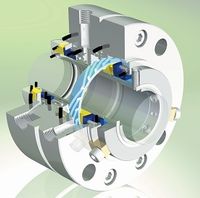Latest News
March 20, 2017
Parasolid v29.1 delivers a number of enhancements to B-rep modeling and Convergent Modeling technology. B-rep enhancements focus on high value workflow automation enhancements enabling application developers to deliver functionality more effectively. Convergent Modeling enhancements focus on working with imported facet data and the architectural foundations to support fully integrated Convergent Modeling in the future where all Parasolid operations will support models containing arbitrary combinations of classic B-rep geometry and facet B-rep geometry.
Modeling
Enhancements have been made to tapering and sweeping to remove potential workflow bottlenecks to deliver successful operations on more complex configurations and provide better diagnostic information when an operation is not possible on a specific configuration:
- Improved quality surfaces are produced when mitering tangent to faces in a body and provide miter-specific failure information if a body taper fails during a mitering operation.
- Added support for tapering a body with a negative taper angle.
- Added option to use a law curve to untwist a twisted sweep along a closed path to ensure alignment at start and end of sweep.
 Untwisting a rotation in the path to ensure a successful sweep along the 3D closed path. Image courtesy of Siemens.
Untwisting a rotation in the path to ensure a successful sweep along the 3D closed path. Image courtesy of Siemens.Blending
Several enhancements have been made to handle operations on complex configurations to improve the success rate of automated workflows, removing the need for application developers to handle these case in their code:
- Optimized results when blends of very similar but different radius interact.
- Improved robustness and surface quality when blending on the inside of tightly curved surfaces, and when repairing self-intersecting blend surfaces.
- Improved handling of partial notches when deleting notch blends.
Convergent Modeling
In addition to extensive, ongoing architectural work to support full Convergent Modeling functionality, a number of enhancements have been delivered to help application developers work with facet data not created by Parasolid:
- Added functionality to detect and fix common facet mesh issues such as corrupt meshes, non-manifold meshes, mesh vertex with bad normal, degenerate mesh facet, self-intersecting meshes, meshes with slits, disjoint meshes.
- Added functions to enquire mesh data include: ask the convexity of an edge on a mesh, find sharp mesh vertices in a mesh, ask the normal of a mesh vertex.
- Added option to request principal directions and curvatures when faceting classic and facet b-rep bodies.
 Facet data imported into Parasolid, such as STL, may require analysis and repair. Image courtesy of Siemens.
Facet data imported into Parasolid, such as STL, may require analysis and repair. Image courtesy of Siemens.Visit the Siemens Parasolid site for more information.
Sources: Press materials received from the company.
Subscribe to our FREE magazine, FREE email newsletters or both!
Latest News







